Abstract
Physiological regulation represented by thermoregulation, neuro endocrine function, neurochemical activity, and immune responses is a composite of exquisitely "tuned" interrelated systems that constitute sensitive indicators of body responses to environmental stimuli or absorbed physical energies. Exposure to microwave/radiofrequency fields may affect such physiological regulation. Study of the integration and correlation of many body functions relative to the altered homoeostatic status of the microwave/radiofrequency-exposed subject is thus indicated. Microwave-induced physiological changes cannot be dissociated from increases in tissue temperature. Such responses are considered to be essential in defence against environmental changes as a febrile response is essential for host immune defence. These responses can also be considered to reflect the utilization of physiological function to maintain regulations or adjustments. These are not necessarily adverse reactions to environmental stimuli. These responses can be transient or persistent, beneficial or detrimental. Assessment of the integration and correlation of these functions relative to the thermal inputs and homoeokinetic reactions of the individual subjected to microwave/radiofrequency energy should permit differentiation between potential hazards which might compromise the individual's ability to maintain normal physiological function and effects which are compensated by physiological redundancy.
Full text
PDF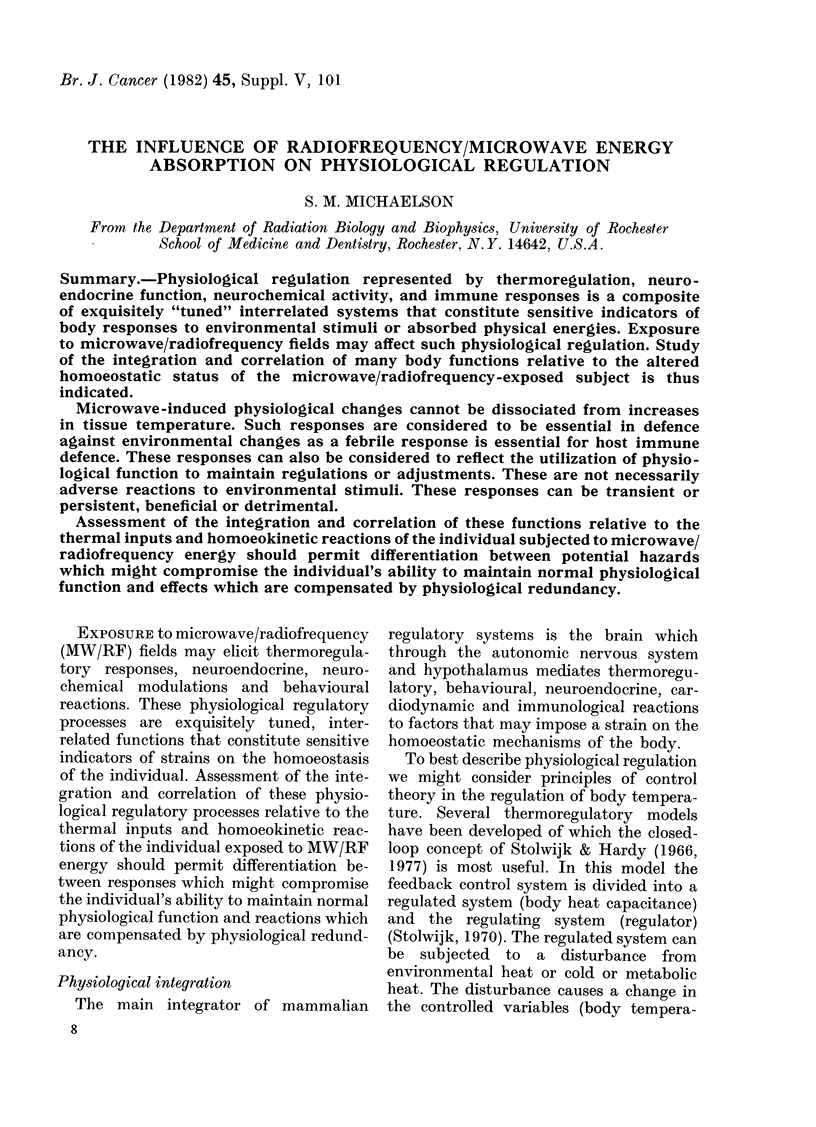

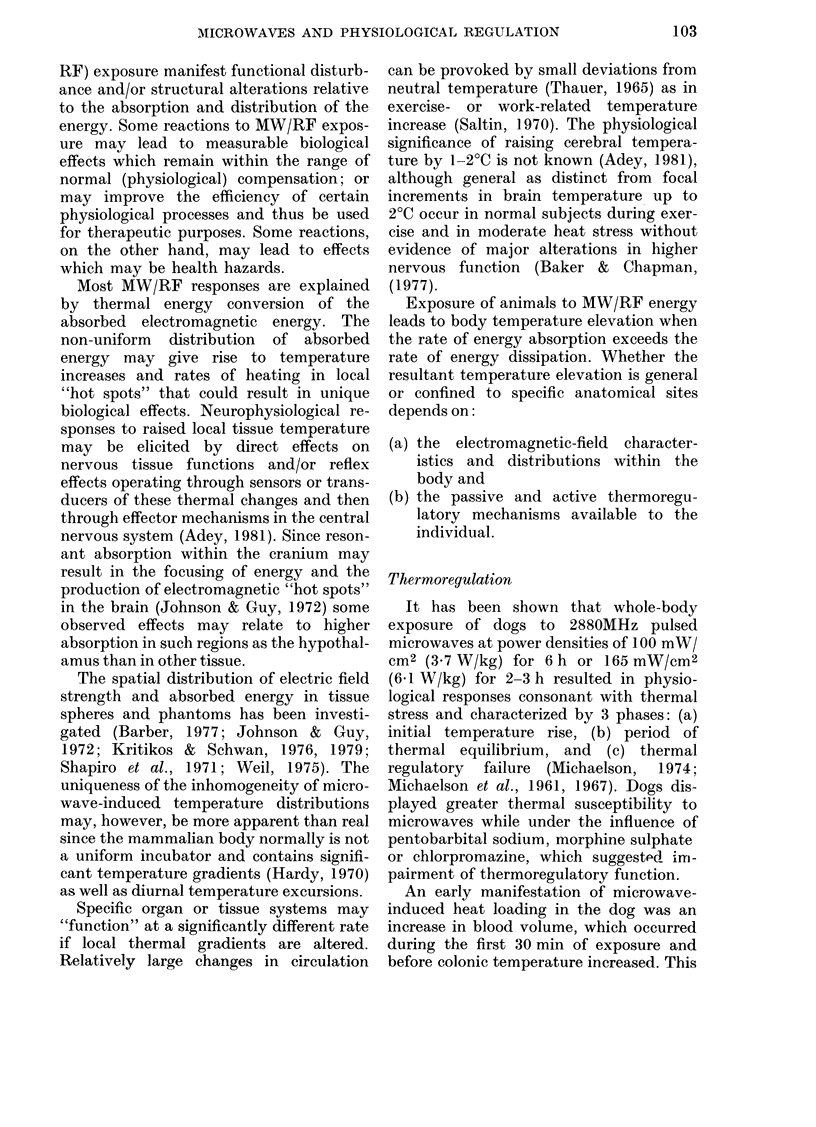

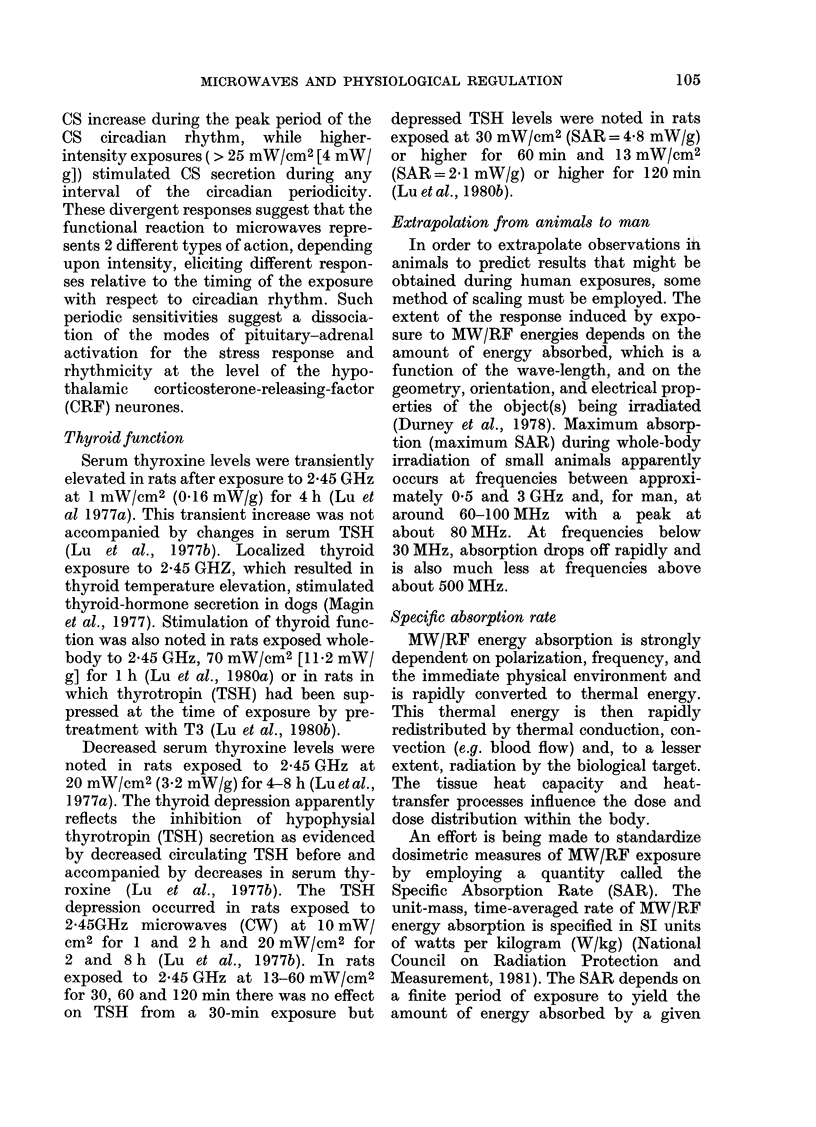
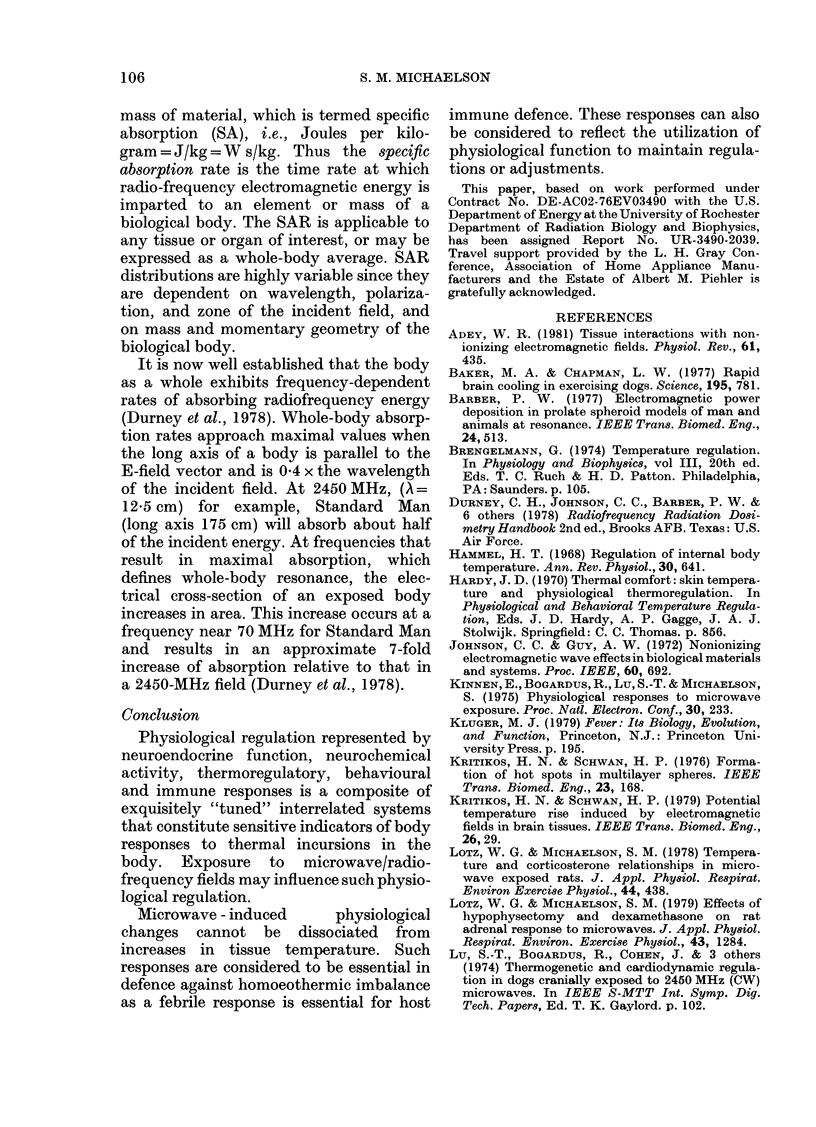
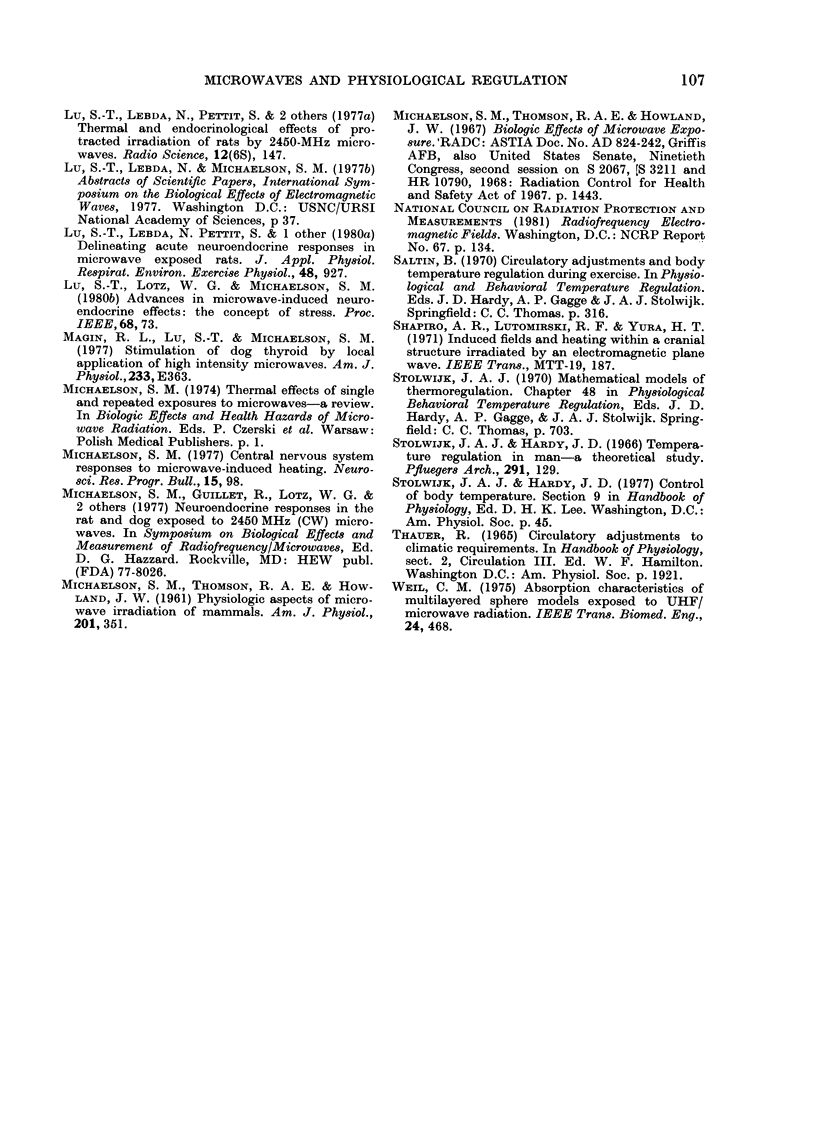
Selected References
These references are in PubMed. This may not be the complete list of references from this article.
- Adey W. R. Tissue interactions with nonionizing electromagnetic fields. Physiol Rev. 1981 Apr;61(2):435–514. doi: 10.1152/physrev.1981.61.2.435. [DOI] [PubMed] [Google Scholar]
- Baker M. A., Chapman L. W. Rapid brain cooling in exercising dogs. Science. 1977 Feb 25;195(4280):781–783. doi: 10.1126/science.836587. [DOI] [PubMed] [Google Scholar]
- Barber P. W. Electromagnetic power deposition in prolate spheroid models of man and animals at resonance. IEEE Trans Biomed Eng. 1977 Nov;24(6):513–521. doi: 10.1109/tbme.1977.326162. [DOI] [PubMed] [Google Scholar]
- Hammel H. T. Regulation of internal body temperature. Annu Rev Physiol. 1968;30:641–710. doi: 10.1146/annurev.ph.30.030168.003233. [DOI] [PubMed] [Google Scholar]
- Kritikos H. N., Schwan H. P. Formation of hot spots in multilayer spheres. IEEE Trans Biomed Eng. 1976 Mar;23(2):168–172. doi: 10.1109/tbme.1976.324581. [DOI] [PubMed] [Google Scholar]
- Kritikos H. N., Schwan H. P. Potential temperature rise induced by electromagnetic field in brain tissues. IEEE Trans Biomed Eng. 1979 Jan;26(1):29–34. doi: 10.1109/tbme.1979.326493. [DOI] [PubMed] [Google Scholar]
- Lotz W. G., Michaelson S. M. Effects of hypophysectomy and dexamethasone on rat adrenal response to microwaves. J Appl Physiol Respir Environ Exerc Physiol. 1979 Dec;47(6):1284–1288. doi: 10.1152/jappl.1979.47.6.1284. [DOI] [PubMed] [Google Scholar]
- Lotz W. G., Michaelson S. M. Temperature and corticosterone relationships in microwave-exposed rats. J Appl Physiol Respir Environ Exerc Physiol. 1978 Mar;44(3):438–445. doi: 10.1152/jappl.1978.44.3.438. [DOI] [PubMed] [Google Scholar]
- Lu S. T., Lebda N., Pettit S., Michaelson S. M. Delineating acute neuroendocrine responses in microwave-exposed rats. J Appl Physiol Respir Environ Exerc Physiol. 1980 Jun;48(6):927–932. doi: 10.1152/jappl.1980.48.6.927. [DOI] [PubMed] [Google Scholar]
- MICHAELSON S. M., THOMSON R. A., HOWLAND J. W. Physiologic aspects of microwave irradiation of mammals. Am J Physiol. 1961 Aug;201:351–356. doi: 10.1152/ajplegacy.1961.201.2.351. [DOI] [PubMed] [Google Scholar]
- Magin R. L., Lu S., Michaelson S. M. Stimulation of dog thyroid by local application of high intensity microwaves. Am J Physiol. 1977 Nov;233(5):E363–E368. doi: 10.1152/ajpendo.1977.233.5.E363. [DOI] [PubMed] [Google Scholar]
- Michaelson S. M. Central nervous system responses to microwave-induced heating. Neurosci Res Program Bull. 1977 Jan;15(1):98–100. [PubMed] [Google Scholar]
- Stolwijk J. A., Hardy J. D. Temperature regulation in man--a theoretical study. Pflugers Arch Gesamte Physiol Menschen Tiere. 1966;291(2):129–162. doi: 10.1007/BF00412787. [DOI] [PubMed] [Google Scholar]
- Weil C. M. Absorption characteristics of multilayered sphere models exposed to UHF/microwave radiation. IEEE Trans Biomed Eng. 1975 Nov;22(6):468–476. doi: 10.1109/tbme.1975.324467. [DOI] [PubMed] [Google Scholar]


